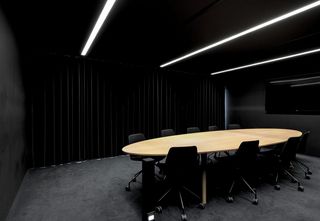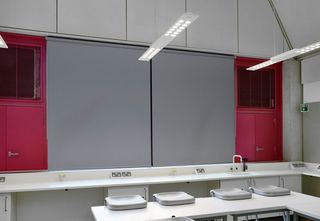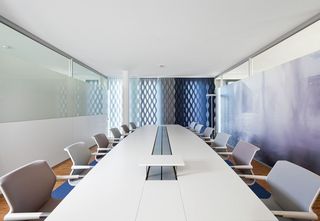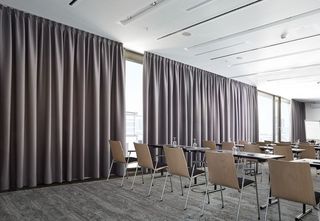Room darkening fabrics
Dimout and blackout fabrics
Dimout and blackout fabrics stand as versatile and functional solutions for room darkening. Dimout fabrics significantly reduce light to minimum for a cozy atmosphere. whereas blackout fabrics take light control to the next level by effectively blocking out almost all external light sources. The insulation properties of both dimout and blackout fabrics help regulate room temperatures and reduce energy consumption. Additionally, the thicker nature of these fabrics provides acoustic benefits to foster a quieter and more peaceful living environment.
Links
Dark rooms promote good sleep
Sleeping in a dark room allows our bodies to produce more of the sleep-inducing hormone melatonin and helps to reset our body clocks, or circadian rhythms.
Working spaces also require room darkening occasionally. Science and medical environments for example, also offices and conference rooms for presentations.
Dimout v’s Blackout Fabrics
The terms ‘blackout’ and ‘dimout’ mean different things. Blackout fabrics stop light transmission. Using either an opaque yarn, a coating or inner core layer, EN 14501 requires blackout fabrics to be tested up to 75,000 Lux. Dimout fabrics reduce light and are tested to a lower level of 1,000 Lux. Light transmission levels of a dim-out fabric will vary according to the fabric design and colour – always check the technical information before selecting.
Shading solutions for room darkening
For ‘near-zero’ daylight, dedicated dimout blind roller blind systems use a blackout fabric contained within side channels to prevent light ingress. Silent Gliss dimout system ‘zips’ the fabric into the side channels. Offered with Mercuro, Moon, Nox and Puma, all have zero visual light transmission.
For a reduction in light levels, a standard roller blind or curtain system using a black-out or dim-out fabric will be sufficient. These do not use side channels, therefore, a degree of light will always creep in around the edges of the fabric.
—







